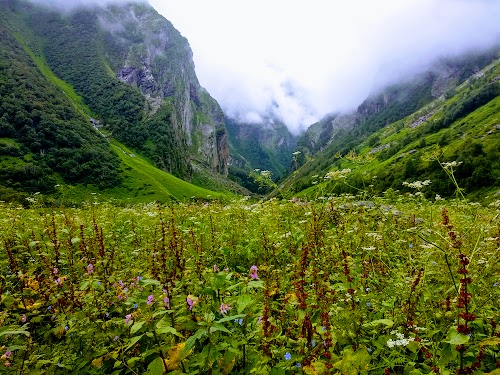
Nanda Devi National Park
Auli, India
- Capture panoramic views of Nanda Devi
- Experience the local culture
- Explore the Rishi Ganga Gorge
- Spot rare Himalayan wildlife
- Trek to the Valley of Flowers
Known for:
Description:
Nanda Devi National Park, a UNESCO World Heritage Site, is a breathtaking sanctuary nestled in the Himalayas, near Auli. Known for its stunning biodiversity and dramatic landscapes, the park offers a pristine escape for nature enthusiasts. Towering peaks, including the majestic Nanda Devi, India's second-highest peak, dominate the skyline. The park is home to a rich variety of flora and fauna, including rare and endangered species like the snow leopard, Himalayan black bear, and blue sheep. Trekking through the park's rugged terrain reveals breathtaking views of alpine meadows, glaciers, and cascading waterfalls. The park's spiritual significance adds another layer to its allure, attracting pilgrims and trekkers alike.
History:
Established in 1982, Nanda Devi National Park initially encompassed the Nanda Devi Sanctuary, created in 1939. The region's unique biodiversity and cultural significance led to its designation as a UNESCO World Heritage Site in 1988. The park has a history of exploration and mountaineering, with expeditions attempting to conquer Nanda Devi. However, recognizing the fragility of the ecosystem, access to the park's inner core is restricted, preserving its pristine beauty. Local communities have a long-standing relationship with the park, respecting its sacredness and contributing to its conservation.